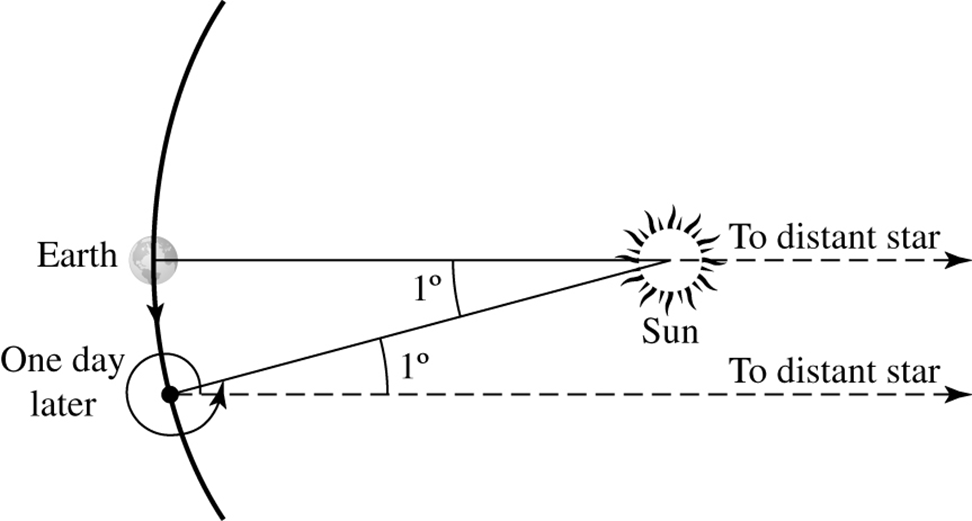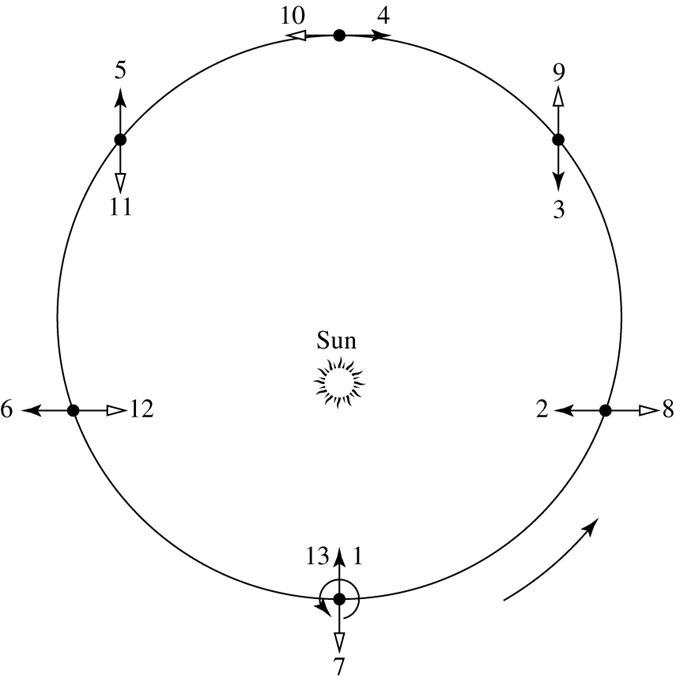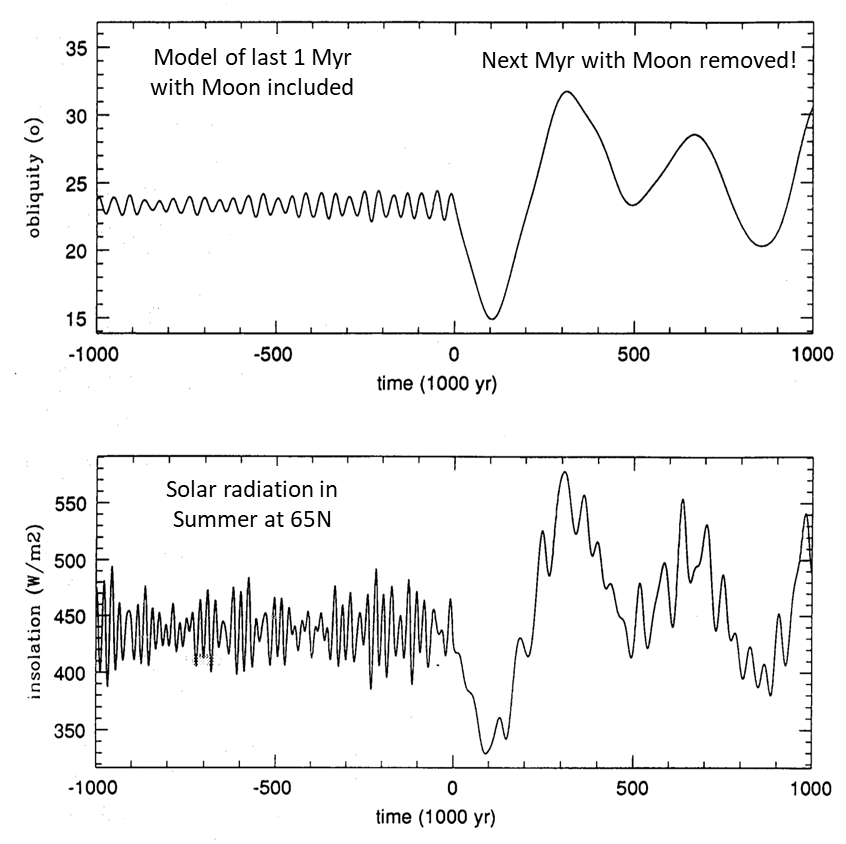PX282 - J8 - orbits
- planets show secular resonances, which are oscillations in eccentricity and inclination
- mercury has the most eccentric and advance of perihelion
- this led to the first test of general relativity
rotation
-
earth and mars rotate rapidly, whereas mercury and venus rotate very slowly due to tidal interactions (synchronization) with the sun
-
tides are also slowing the rotation of earth, seen directly in sea shell fossil records
-
the true rotation period is the sidereal day* , while the solar day for earth is slightly longer (4 min) due to orbital motion

image: Carrol & Ostile, An Introduction to Modern Astrophysics, 2007
-
the difference is much more for slowly rotating planets
-
for mercury, it is thrice longer than its spin period
-
venus has a very slow retrograde rotation due to faster retrograde circulation of the atmosphere driven by solar heating
-
mercury's rotation is stuck in
resonance with its eccentric orbit (spins times per orbit), keeping its small permanent deformation aligned with the sun at perihelion (where tidal forces are the strongest)

image: Carrol & Ostile, An Introduction to Modern Astrophysics, 2007
obliquity
-
obliquity is the angle at which the spin axis is tipped
-
mercury and venus have very small obliquities due to tidal synchronizations
-
earth and mars have an obliquity
-
this is the reason for seasons
-
since the earth is slightly oblate, ie. bulges around the equator, there is a torque due to solar gravity
-
this causes the spin axis to rotate - precession
-
the obliquity of mars varies due to small torques from the planets
-
this leads to large climate variations
-
torque due to the moon stabilizes earth's obliquity
-
there are small variations, together with secular resonances in
and , that lead to milankovich cycles in earth's climate

image: Laskar (1993)